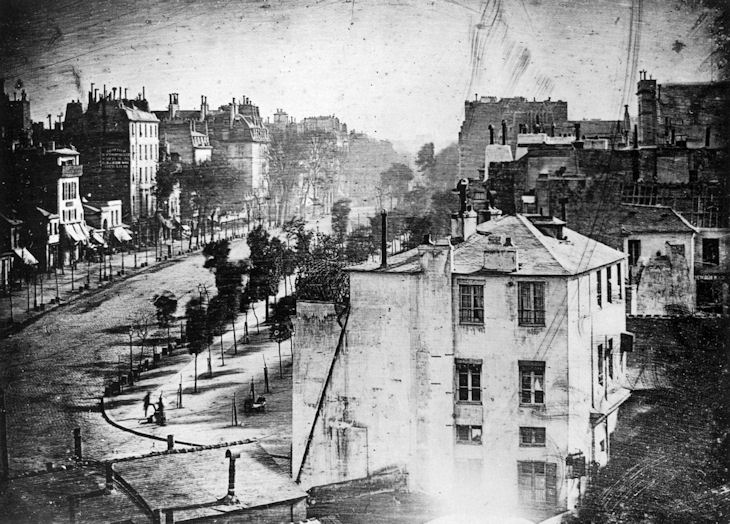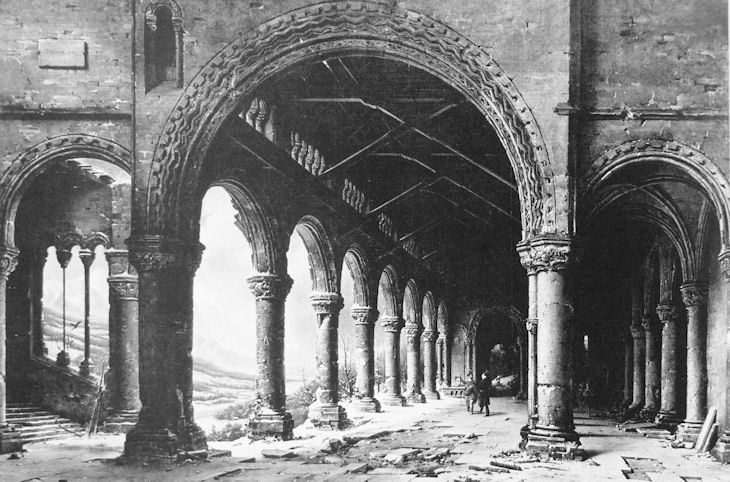Louis Daguerre
(1787 – 1851), was a French artist (painter) and chemist,
recognized for his invention of the daguerreotype process of photography.

Boulevard du Temple, Paris, Spring 1838, by Daguerre
(the first photograph of a person ever made).
Scanned from The Photography Book, Phaidon Press, London, 1997
This work is in the public domain in the United States, and those countries with a copyright term of life of the author plus 100 years or less.
This file has been identified as being free of known restrictions under copyright law, including all related and neighboring rights.
The image shows a busy street, but because exposure time was more than ten minutes, the moving traffic does not appear. Only a man getting his boots polished, the shoe-shine boy, and two people sitting at a table nearby stood still long enough for their image to be captured. The image is reversed (as were all Daguerreotypes) as is evidenced by the writing on a building in upper left.
Look closely and you will also see another man sitting on a bench to the right reading a newspaper. Also in the upper left hand side you can also see another man standing under the awning of the 3rd building from the left.
What looks to be a woman standing under the street lantern at 10 o'clock from the man getting his shoes shined and another one in the big white building,1st row 3rd window down. Notice the child in the top floor window of the white building in front. Note that the image is a mirror image.
We forget that Daguerre had been a painter when he invented the daguerreotype:

Personnages visitant une ruine médiévale 1826.
Oil on canvas, 102 x 154 cm. Galerie Gérard Lévy, Paris
Scanned from: Erika Billeter, Malerei und Photographie im Dialog. Von 1840 bis heute,
Bern 1977, p. 68
This work is in the public domain in the United States, and those countries with a copyright term of life of the author plus 100 years or less.
This file has been identified as being free of known restrictions under copyright law, including all related and neighboring rights.
ALL IMAGES AND SITE CONTENT © WOLFGANG HOCK